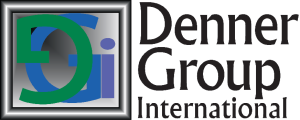Using Systems Thinking in a Small Business
A Case Study Example By Eric A Denniston, Managing Director, Denner Group International 3-13-2013 Takeaways:
Takeaways: Understanding root causes and unintended consequences are two aspects of having a  systems thinking discipline in your business. Answering the five key strategic questions helps gain clarity and ensure long term sustainable processes that are easy to implement.
systems thinking discipline in your business. Answering the five key strategic questions helps gain clarity and ensure long term sustainable processes that are easy to implement.
I recently had an opportunity to remind myself and a client about the importance of being disciplined in applying Systems Thinking to life’s challenges, issues and problems. The problem was a complaint within the ranks of my client’s business stakeholders. I call them stakeholders because they do not function in the traditional context of employees within the organization, but more like volunteers. This might appear as a simple management issue, but it involves root causes and unintended consequences. These are two by-products of not applying a disciplined Systems Thinking Approach to a problem. Let’s take a look.
Five Key Questions
A member of the team was asked to lead a group session. This person is admittedly new to this particular program and is actually being trained to lead this type of session on a regular basis. Two other participants, who are on deck to undergo the same training, expressed their concerns with this new session leader’s performance. When my client asked me for advice on this matter, I took us through the following five-step process by answering these questions:
- What outcomes does the firm want, what outcomes do the players want, and by when?
- What milestones or metrics will inform us that we’re on track to a sustainable solution?
- What is our current state, for which I like use a traditional SWOT analysis?
- What are the 3-to-5 key actions we can take to reach our desired outcomes?
- What will be occurring in the future that will affect our situation and that we should plan for?
So now what? First we identified the players, clarified roles, and defined the impact their roles have. Then we listed the specific outcomes the firm desires and the outcomes the stakeholders want. This included outcomes specific to their roles which identified the need for specific tools to achieve those outcomes.
Next we wrote down the feedback we need and the sources of that feedback to have more clarity on the scope of the stakeholders’ roles. This included directing the stakeholders to create processes by which broader feedback from customers can be gathered, and encouraging them to promote the firm’s various programs on a regular basis. We also created a process to track this initiative to provide feedback. This will allow our client to anticipate upcoming changes related to how they distribute data, and continue to improve the customer experience.
We then did a quick SWOT analysis related only to the issue at hand, not the whole firm. This brought out some interesting weaknesses and threats that needed to be mitigated, and some clear strengths and opportunities to be further leveraged.
As we worked on the key actions to move the team toward the sustainable results they desire, it became clear that the stakeholders required further empowerment in their roles. One key way to accomplish this would be to provide them with much better customer contact information so they can more effectively promote the firm’s services. It became clear the team could benefit from a clear charter for their activities. In addition, a budget would be beneficial to add another level of measuring effectiveness.
Finally, the exercise of looking at what the FUTURE environment of the team’s activities might be facing showed us that we had overlooked a key fifth stakeholder. In actuality, I realized I had not driven the inquiry process deep enough until after this exercise with the client, and my consulting team helped bring forth the missing fifth stakeholder.
The outcomes the client achieved from this exercise resulted from using a systems thinking framework that helped to maintain their thinking discipline in solving issues that required both management and decision making. This helped the client gain clarity on the issue and the outcomes, and ensured the processes were sustainable and easy to implement.
